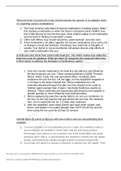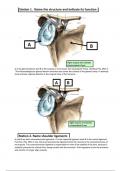Summary
Summary ANTH1001C- Ch6-10 & Lectures 5-9 Notes - Study Material
- Course
- ANTH1001C (ANTH1001C)
- Institution
- Carleton University (CU )
This document contains my notes on chapter 6-10 of Liam Kilmurray’s Anthropology textbook as well as his lectures 5-9. The topics include: expressive culture, ethnographic studies, material culture, religion and culture and archaeology. My notes are very detailed and neat so information is easy t...
[Show more]








